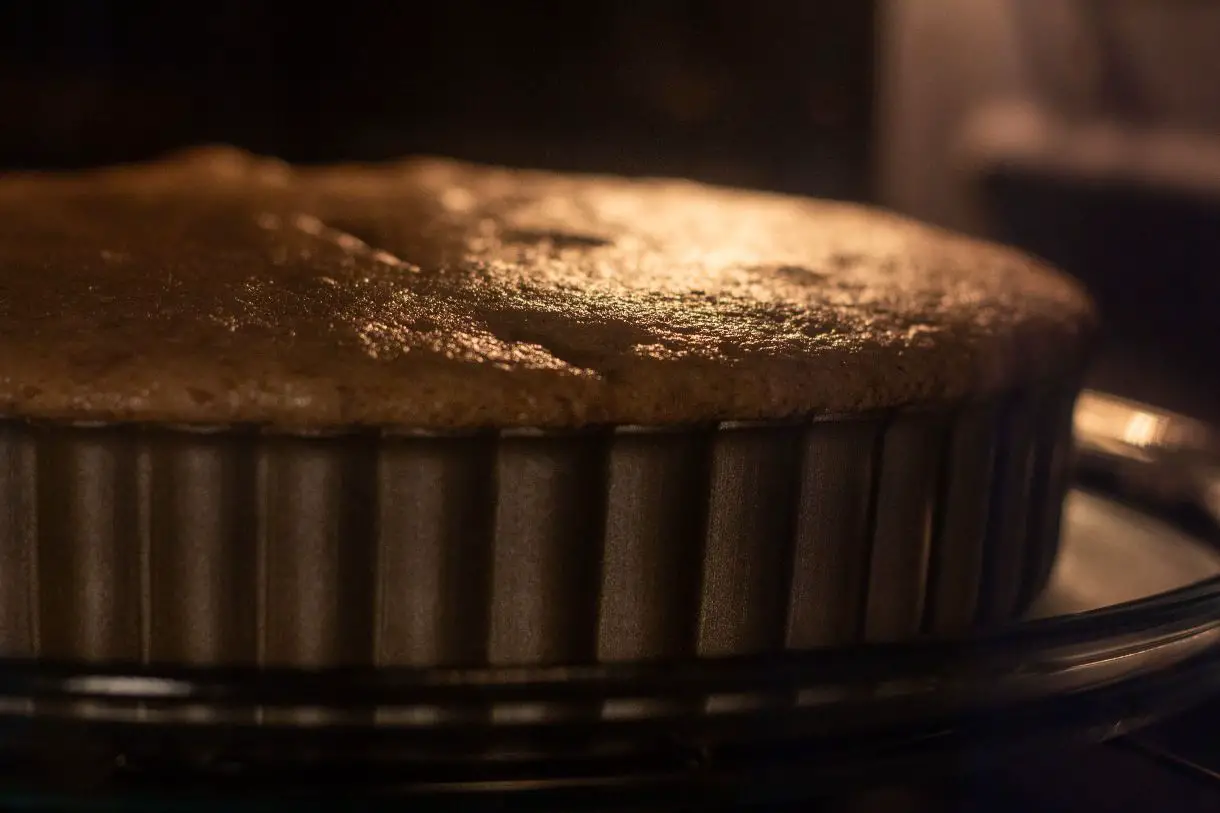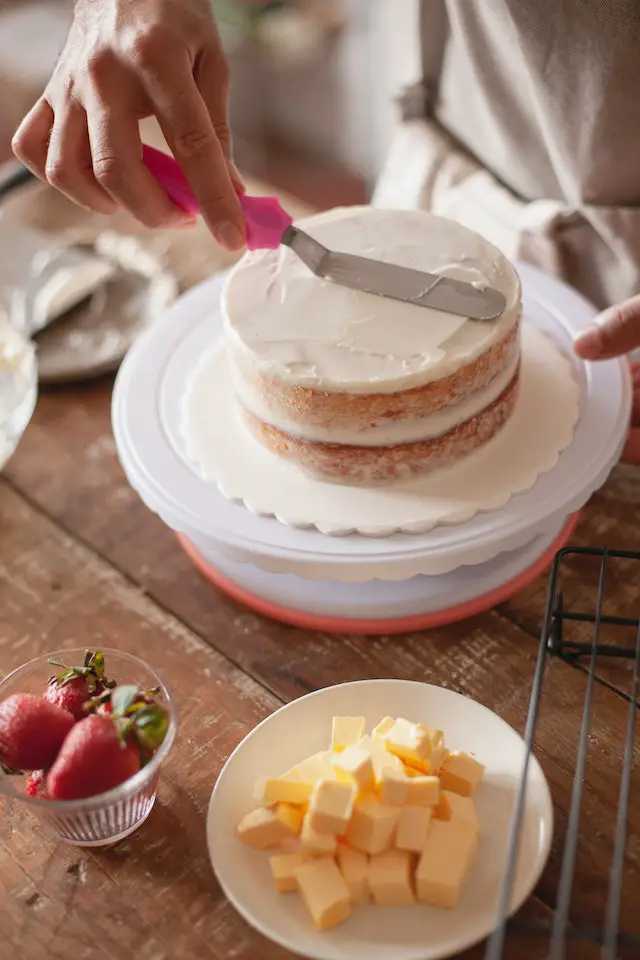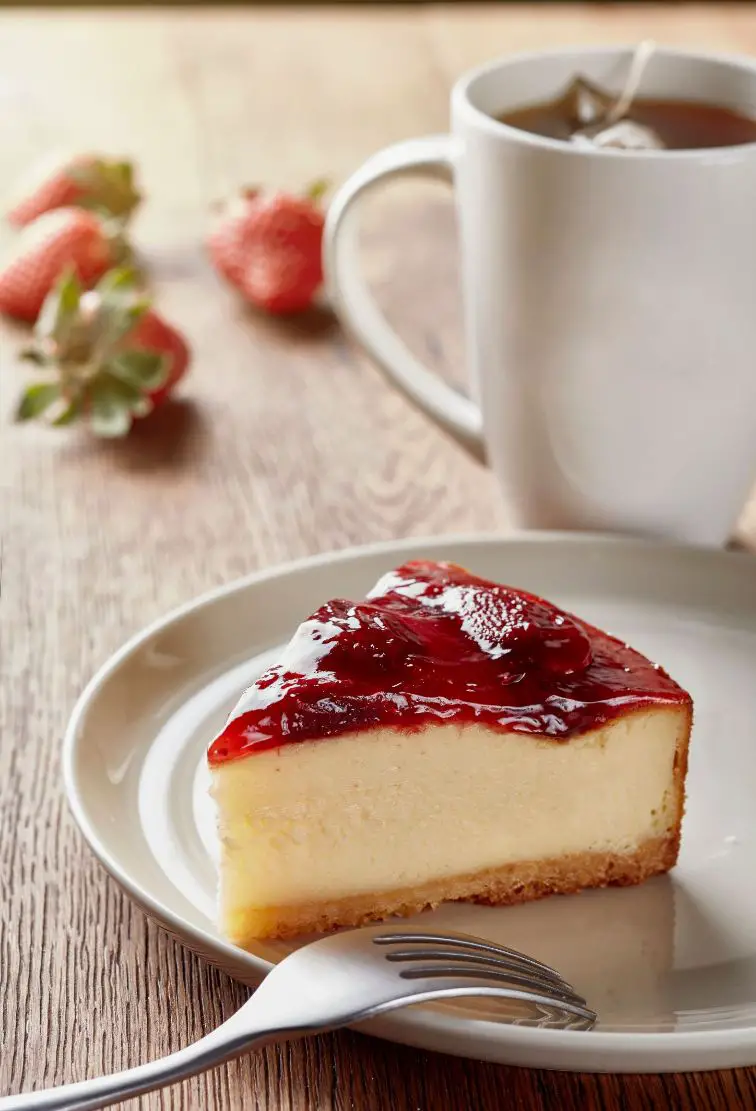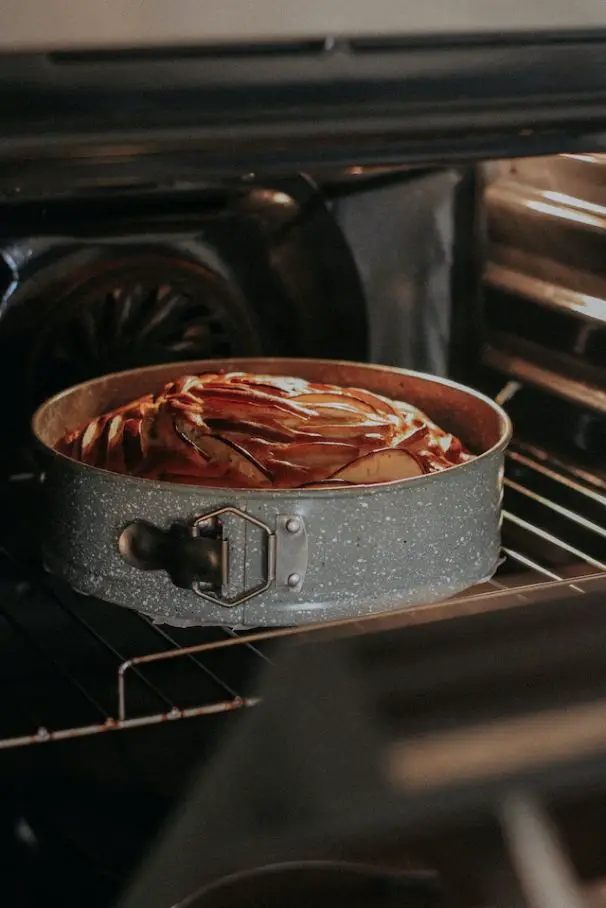Cheesecake is a delectable dessert loved by many for its rich and creamy texture.
However, there are times when the top of the cheesecake doesn’t come out as expected and ends up burnt.
This can be disheartening, especially after putting effort into baking it.
In this article, I’ll reveal how to fix burnt cheesecake top, the causes behind this issue, how to prevent the cheesecake from burning on top, and whether is it safe to eat an overcooked cheesecake.
So, let’s dive in!
Why Does My Cheesecake Burnt on Top? 7 Possible Reasons
A burnt top on a cheesecake can be a result of various factors. Understanding these causes is crucial in determining the appropriate steps to fix the issue.
Let’s explore some common reasons behind a cheesecake with a burnt top:
1. Uneven Oven Temperature
One of the primary culprits behind a burnt cheesecake top is an uneven oven temperature.
Ovens can have hot spots, meaning certain areas inside the oven get hotter than others.
When baking a cheesecake, this inconsistency in temperature can cause some parts of the cheesecake to cook faster than the rest.
As a result, you end up with a burnt top while the center of the cheesecake remains undercooked.
2. Incorrect Rack Placement
The placement of your cheesecake on a particular oven rack can also affect the baking process.
Placing the cheesecake on the wrong rack can lead to uneven heat distribution.
The top rack, being closer to the heat source will expose the top of the cheesecake to intense heat, causing it to burn before the center has had enough time to bake properly.
3. Overbaking
Leaving your cheesecake in the oven for an excessive amount of time can be detrimental to its overall texture and appearance.

Overbaking causes the moisture to evaporate excessively, resulting in a dry and overcooked top.
As the top is exposed to prolonged heat, it becomes more susceptible to burning, which can be disappointing after investing time and effort into baking a cheesecake.
4. High Sugar Content
When the cheesecake recipe contains a high amount of sugar, it can have negative effects during the baking process.
Sugar has the tendency to caramelize and brown when exposed to high heat, and this can lead to the top of the cheesecake getting burnt.
To avoid this, it’s essential to be mindful of the sugar quantity in the recipe and consider adjusting it if necessary.
5. Inadequate Insulation
The insulation around the springform pan is crucial for even baking and preventing the top of the cheesecake from burning.
If the pan is not adequately insulated, excessive heat may reach the top of the cheesecake, causing it to burn during baking.
To improve insulation, consider using insulated baking mats or double-layering regular baking sheets.
This will help distribute the heat more evenly and protect the cheesecake’s top from direct exposure to intense heat
6. Lack of Water Bath
Not using a water bath during the baking process can make the oven environment too dry, increasing the chances of a burnt top.
A water bath, also known as a bain-marie, involves placing the cheesecake pan within a larger pan filled with hot water.
This water creates a moist and gentle heat around the cheesecake, preventing the top from getting scorched while ensuring even and gentle baking.
7. Excessive Openings of the Oven Door
Frequent opening of the oven door to check on the cheesecake can cause fluctuations in temperature and affect the baking process, which will lead to a burnt top.
Every time the oven door is opened, the hot air inside escapes, and the oven’s temperature drops.
This fluctuation in temperature can disrupt the delicate baking process of the cheesecake, leading to uneven cooking and potentially a burnt top.
How to Fix Burnt Cheesecake Top – 5 Easy Ways
Having a burnt top on your cheesecake can be disheartening, but don’t worry! Here are 5 effective ways to help you fix it:
1. Trim the Burnt Edges
To improve the appearance of your cheesecake after it has been slightly burnt, you can take a knife or an offset spatula and carefully remove the charred edges.
This process will eliminate the visibly damaged parts and result in a neater-looking cheesecake.
2. Cover It Up
To conceal the burnt top of the cheesecake, there are several creative options you can explore.

One approach is to spread a layer of sweetened whipped cream, fruit preserves, or fresh fruit over the burnt area.
This not only hides the blemishes but also adds extra flavors and enhances the visual appeal of the cheesecake.
3. Dust With Powdered Sugar or Cocoa
Another effective method to mask the burnt top is to lightly dust it with powdered sugar or cocoa powder.
This strategy creates a contrasting appearance that will divert attention from the burnt spots, making them less noticeable.
4. Slice and Serve Creatively
When the burnt portion is limited to only a small area of the cheesecake, you can cut the dessert into smaller portions and arrange them creatively on the serving plate.
By strategically placing the burnt parts where they are less visible, you can make the imperfections less obvious.
5. Serve With a Sauce
An excellent way to enhance the overall taste and conceal any burnt areas is to prepare a delicious sauce, such as raspberry coulis or caramel sauce.

Drizzle the sauce over the top of the cheesecake, and it will not only add a burst of flavor but also provide effective coverage for any burnt spots.
How to Prevent Cheesecake from Burning on Top?
Prevention is better than cure. Here are some tips to ensure your cheesecake tops remain perfectly golden.
1. Use a Water Bath
Cheesecakes benefit from baking in a water bath. Wrap the outside of your springform pan tightly with aluminum foil to prevent water from seeping in.
Place the pan in a larger roasting pan and fill the roasting pan with hot water so that it comes about halfway up the sides of the springform pan.
The water bath helps create a gentle and even heat distribution, reducing the chances of the top of the cheesecake burning.
2. Lower the Oven Temperature
To enhance the baking process of your cheesecake and to prevent the dreaded burnt top, lower the oven temperature.
Instead of using higher temperatures, bake the cheesecake at around 300°F (150°C).
This lower temperature will allow for slower and more even cooking, reducing the risk of burning on the top surface of the cheesecake.
When you bake at a lower temperature, the heat penetrates the cheesecake more gently, giving it ample time to cook evenly from the center to the edges.
This helps maintain the texture and consistency of the cheesecake while preventing the top from becoming overly browned or burnt.
3. Lower Rack Placement
The positioning of the cheesecake within the oven is another crucial factor in preventing burnt tops.
For optimal results, place the cheesecake on the lower rack of your oven. By doing so, you avoid direct exposure to intense heat from the upper heating elements.

Also, Placing the cheesecake on the lower rack promotes better air circulation and heat distribution throughout the oven.
This ensures that the cheesecake bakes evenly, and the top is less prone to excessive browning or burning.
4. Foil Shielding
Towards the end of the baking time, you should take additional steps to safeguard the top of your cheesecake from browning too much.
One effective technique is to create a foil shield to cover the top surface.
To do this, carefully shape a piece of aluminum foil to fit over the exposed surface of the cheesecake.
This foil shield acts as a protective barrier that prevents direct heat from reaching the top of the cheesecake.
As a result, the top remains lighter in color and avoids becoming burnt, even as the rest of the cheesecake continues to bake to perfection.
5. Use of Sour Cream
An ingenious way to protect your cheesecake from burning on top and add a delightful twist to its flavor is by using a layer of sour cream.
Before placing the cheesecake in the oven, apply a smooth and even layer of sour cream on top of the cheesecake batter.
Sour cream contains fats and moisture, which act as a protective barrier during baking.
This layer of sour cream shields the surface of the cheesecake, reducing the risk of excessive browning or burning.
Additionally, the sour cream adds a tangy and creamy taste to the cheesecake, enhancing its overall appeal and making it even more enjoyable to savor.
Can You Eat Overcooked Cheesecake??
Yes, you can eat overcooked cheesecake, but the texture and taste may not be as enjoyable as a properly cooked one.
Overcooking can cause the cheesecake to become dry, crumbly, and potentially burnt around the edges.
The flavor might also be more intense due to caramelization, but it is still safe to eat.
How to Fix Burnt Cheesecake Top – Conclusion
In conclusion, while a burnt top on a cheesecake can be disheartening, there are effective ways to fix and prevent this issue.
Understanding the causes, such as uneven oven temperature, incorrect rack placement, overbaking, high sugar content, inadequate insulation, and lack of a water bath, is essential to addressing the problem.
If you find yourself with a burnt cheesecake top, there are several creative ways to fix it, such as trimming the burnt edges, covering it with whipped cream or fruit, dusting it with powdered sugar or cocoa, slicing and serving creatively, or serving with a sauce.
By following these tips and understanding the reasons behind a burnt top, you can ensure that your cheesecakes come out perfectly golden and delicious every time.

